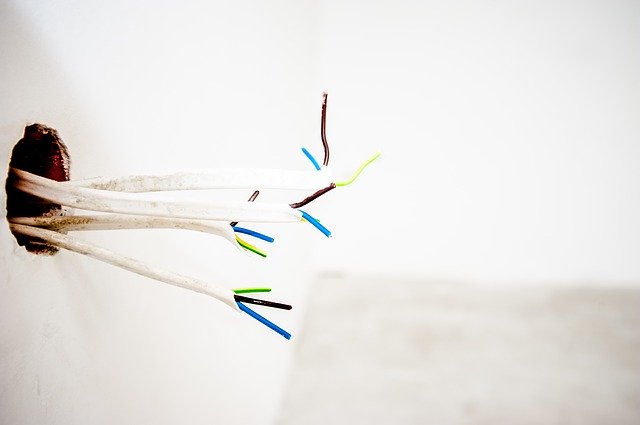
The location of electrical outlets and switches in the apartment should be determined before furniture is placed. Each appliance needs to be supplied with electricity, forcing more or less extensive changes to the electrical wiring, depending on how different the final realized image is.
Mistakes are common and repairs are unattractive,so let\’s simplify what is most important.

The lighting circuit is realized with a 3-core copper cable2 of 1.5 mm cross section (e.g. CYKY 3Jx1.5) and protected by a 10 A circuit breaker. If possible, the switch should be located by the door handle of the room where the light is controlled, 10 to 30 cm from the door opening and 90 to 120 cm high (recommendation is 105 cm high at the door handle). The switch is wired to turn off the phase wires. In lighting, the phase wires are connected to a central contact.
Single-phase socket circuits are protected by a 16 A circuit breaker using a 3-core copper cable (e.g. CYKY 3Jx2.5) with a cross section of 2.5 mm2. A duplex socket counts as one socket. The total input power of the individual appliances in the circuit must not exceed 3 520 VA. [Sockets are to be installed 20 cm above the floor.
In kitchens, sockets should be located on the worktop or table at the same height as the switch. The location of built-in kitchen appliances must not be forgotten. Their precise measurement is a condition for success.
Switches and sockets should be at least 60 cm away from water sources and 60 cm away from stoves and cookers.
The risk of electric shock is increased in bathrooms. This is due to the possibility of water spurts and direct access to electrical components from the bathtub or shower.50]
Outlets and switches should not be located less than 60 cm from the bathtub or shower, and only sockets and lighting circuits protected by surge protectors should be installed 60 to 240 cm away from the bathtub or shower.
In the case of washbasins, sockets and switches shall not be installed in a zone the width of the washbasin from floor to ceiling.
On-premises wiring
- The condominium management association or homeowner must seek approval for implementation. Notify neighbors of the proposed activity due to the noise generated by the cable cut. 65]
- Prepare a sketch of the proposed development.
- Leave the actual modifications to an electrical engineer. If you do the modifications yourself, at least have an electrician evaluate the design for compliance with applicable standards and ordinances.
- Route cables at right angles. Take pictures of the walls with your cell phone before plastering. This is useful for displaying photos.
- Boxes for single-phase outlets, switches, and wreaths should be 30-40 mm deep. Shallow depth boxes leave little room for more than two cables.
Intervening in existing wiring requires mapping the current situation. We need to know if we are building a new circuit or using an existing one.
.